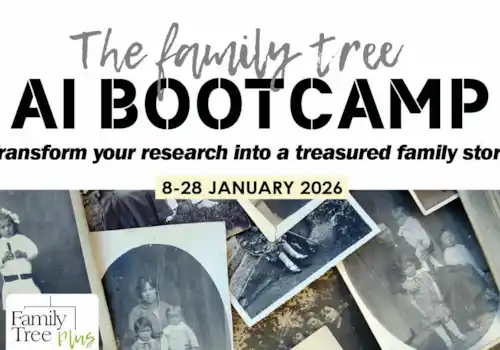The forthcoming 400th anniversary of the sailing of the Mayflower provides a wonderful opportunity to think about our 17th century ancestors, whether they made this epic journey, or continued with their lives at home. Read on to learn about their homes, gardens, health & more with 17th century specalist Janet Few.
We are fast approaching 16 September 2020, the 400th anniversary of the Mayflower leaving these shores, taking 102 passengers to a new life in America.
Contrary to popular opinion, these emigrants were not all Separatists seeking religious freedom. About half of those on board had other reasons for emigrating. Unfortunately, many of the Mayflower400 events that had been planned to commemorate this occasion have had to be postponed or cancelled. Despite this, it is still an opportunity to think about our 17th century ancestors, whether they made this epic journey, or continued with their lives at home.
Some of us are lucky enough to be able to put names to a few of our 9x and 10x great grandparents, who lived in 1620; others are still on a quest to discover them. We all have 17th century ancestors, even if we cannot yet name them and maybe we should use the occasion of the Mayflower’s 400th anniversary to think more about them.
First of all, where would they have lived in the 17th century?
Unless our ancestors were wealthy and very few were, they would live in a small cottage built in the appropriate style for the geographical area. Lower status housing was constructed from readily available building materials and these vary across the country. In places, such as Cornwall, where granite is plentiful, cottages might be stone-built. Further east in Devon, cob construction was common. This consists of mud, with some rubble, straw and cow manure thrown in.
There is an introductory article on vernacular housing on the Historic England website and the bibliography leads you to further sources. Take the trouble to find out what kind of home your ancestors of the Mayflower era might have had.
How would our ancestors furnish their 17th century home?
Then that home that you have created needs to be furnished, sparsely mind, furniture and household possessions at this time would be minimal, functional and mostly home-made. Seventeenth century wills and inventories give an impression of homes’ interiors, even if they are not documents that relate to you own ancestors. You might need to scale things down a little, as wills and inventories are likely to relate to the more comfortably off.
RESEARCH TIP! Try Old and Interesting for information about household interiors through the centuries.
What about the daily chores for the 17th century housewife?
Just how difficult was it to cook and clean for a family? How heavy was that wooden bucket of water that she would need to carry from the village well several times a day? The answer is about four stone or 25-30kg. For information about the life of your female ancestors try the Women’s Work in Rural England 1500-1700 website. Think about what that ancestress would be cooking and how this would be accomplished. There is more information on the British Library site. Be sure to click on the links on the right-hand side to access actual recipes of the time.
What were our ancestors’ 17th century gardens like?
Does this cottage that your family are living in have any outside space? The chances are that it does and that any garden would be a vital resource for your ancestors and their household. You might envisage a ‘chocolate-box’ cottage garden and indeed it may have looked attractive but those plants and herbs would be there for their utility not their appearance.
Many of course would be intended to supplement the family diet, others would have medicinal properties or be grown for household purposes. The bulbs of the humble bluebell, for example, can be boiled up to make glue. Are you able to source online 17th century herbals and discover how your Mayflower era ancestors would have used particular plants? See what Nicholas Culpeper advised at the time.
How would our 17th century ancestors treat ailments?
That leads us to medicine. Infectious disease is very much in our minds at the moment and would also have been feared in the 17th century. The Mayflower left from Plymouth, where there was a major outbreak of plague just five years afterwards. There were also other ailments and injuries that needed treatment. If the resources of the family herb garden were inadequate, then it might mean calling on the services of the barber surgeon. For more about what this might entail, take a look at The Surgeon’s Mate, written by John Woodall, just three years before the Mayflower sailed.
Thinking about your 17th century Mayflower-era ancestors
Now you have begun to see your 17th century ancestors in three dimensions, spare a thought for those 102 souls on the Mayflower, half of whom would not survive their first year in the New World. What could they have carried with them from their old lives, to aid them in their new venture? They must have wondered what they would find in the way of building materials, tools and food on arrival.
The few women on board would probably have packed precious herbs to treat their family, not knowing if similar plants would be growing on the far side of the ocean.
Janet Few is an historian, author, genealogist and historical interpreter, who occasionally appears as her C17th alter ego Mistress Agnes. She is the author of Coffers, Clyster, Comfrey and Coifs: the lives of our seventeenth century ancestors, which is currently on offer on her website.
Her new historical novel Sins as Red as Scarlet is based on a true story and is set in the 17th century. It will be available from 29 August. Details of how to pre-order can be found here and for more C17th resources see Janet’s Swords and Spindles site.










